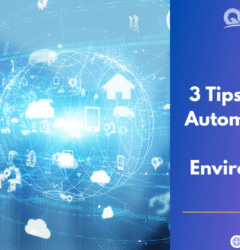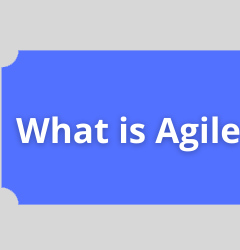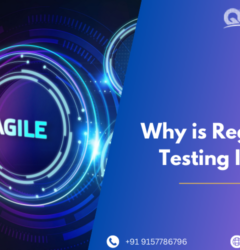03 Jun

At the starting point of any software project, organizations and teams have to first deal with the question of the agile vs waterfall model. Software projects follow a methodology of apparently defined processes or software development life cycle (SDLC) to ensure the end product is of high quality. An SDLC classifies phases and the structured flow from one phase to another. Generally, there are six to seven phases. Waterfall and Agile are two famous, but very different, development processes.
What is the Waterfall model?
The waterfall model is also common as Liner Sequential Life Cycle Model. The waterfall model is followed in sequential order, and so the project development team only moves to the next phase of development or testing if the previous step is completed successfully.
It is one of the easiest and most traditional models to manage. Because of its traditional development humor, each phase has specific deliverables and a review process. The waterfall model works well in smaller-size projects where requirements are simply understandable.
The waterfall model is a universally acknowledged SDLC model. In this method, the whole process of software development is divided into different phases. The development in the waterfall model is seen as flowing regularly downwards (like a waterfall) as it is a continuous software development model. This model is named the “Waterfall Model” because its diagrammatic representation simulates a cascade of waterfalls.

A few important points related to the waterfall model are listed as follows:
- The requirements in the waterfall model should be clear at the beginning time otherwise, it may lead to a less effective method.
- The waterfall model is not an excellent model to develop a large-scale project size.
- In the waterfall model, it is hard to move back to make changes in the earlier phase.
- The testing process in the waterfall model starts after the completion/realization of development. So, there is a high chance of bugs being found later in the project development.
What is the Agile model?
The Agile methodology builds up the continuous interaction of the development and testing during the SDLC process of any project. Dissimilar to the waterfall model, the testing and development activities in the agile model are simultaneous. Agile methodology grants much communication between the customers, developers, testers, and managers.
Agile methodology is a type of incremental way to software development based on principles that focuses more on people, results, collaboration, and flexible responses to change. Instead of planning for the full project, it breaks down the development process into small increments completed in iterations or short time frames. Each iteration adds all SDLC phases such that a working product is delivered at the end. After several iterations, a new or updated product is released.
Agile development methodology and testing practices have worked wonders for several organizations with positive forms. The positive forms of agile are not hidden. They are very much clear in organizations.

A few important points related to the agile model are listed as follows:
- Agile focuses on customer feedback, small and rapid releases, and collaboration.
- Its purpose is to handle complex projects.
- Agile produces much better application suites with the desired requirements. Furthermore, it can quickly adapt according to the changes made on time during the project life.
- It has a small team size. Therefore, limited people work on it so that they can move faster.
- The agile model is not a relevant model for small projects. The expenses of developing small projects using agile are more than compared to other models.
- In agile methodology, the interaction of customers/clients is very high, as after each iteration an incremental model is deployed to customers.
Advantages of the Waterfall model
- The waterfall model is one of the easiest models to manage. Because of its humor, each phase has specific deliverables and a review process.
- It works very well for smaller-size projects where requirements are easily understandable.
- Very faster delivery of the project.
- Process and results are strongly documented.
- Simply adaptable method for shifting teams.
- This project management methodology is beneficial to handle dependencies.
- Dedicated resources can work in parallel for their definite tasks.
- Easier costing.
- Clear measurements of progress.
Advantages of the Agile model
- It is a focused client process. So, it makes sure that the client is continuously involved during every stage.
- Very faster software development life cycle.
- Agile teams are highly motivated and self-organized so it is likely to provide much better results from the development projects.
- The agile software development method assures that the quality of the development is maintained.
- The procedure is completely based on incremental progress. Thus, the client and team know exactly what is complete and what is not. This cuts down risk in the development process.
- Flexible in accepting changes.
- Promotes energetic communications.
- Ideal for projects with non-fixed financing.
Limitations of the Waterfall model
- It is not an optimal model for a large size project
- If the requirement is not sufficient or clear at the beginning, it is a less effective method.
- Very difficult to move back to make changes in the earlier phases.
- The testing procedure starts once development is over. So, it has a high chance of bugs being found later in development where they are expensive to fix.
- Sequential access is not ideal for a large-sized project where the result is too far in the future
Limitations of the Agile Model
- It is not an appropriate method for small development projects.
- It requires an experienced to take important decisions in the meeting.
- The cost of implementing an agile method is a bit more compared to other development methodologies.
- The project can easily go off track if the project manager is not clear about what outcome they want.
Agile Vs Waterfall model – What’s the Difference?
Below is a difference between Agile and Waterfall models:
| Purpose | Waterfall | Agile |
| Definition | The waterfall model pursues a sequential design process. | The agile model pursues the incremental approach, where each incremental part is developed through iteration after every timebox. |
| Progress | In the waterfall model, typically the measurement of success is in terms of completed and reviewed artifacts. | In the agile model, generally, the measurement of progress is in terms of developed and delivered functionalities. |
| Nature | On the other hand, the waterfall model is rigid as it does not allow the reshaping of the requirements once the development process starts. | The agile model is flexible as there is a possibility of modifying the requirements even after starting the development process. |
| Customer interaction | In a waterfall model, there is very less customer interaction. It is because the product is delivered to the customer after overall development. | In the agile model, customer interaction is high. It is because, after every iteration, an incremental version/form is deployed to the customer. |
| Team size | In the waterfall model, the team may consist of more or extra members. | It has a smaller team size. A few people work on it so that they can move faster. |
| Suitability | The waterfall model works well in smaller-size projects where requirements are simply understandable. But waterfall model is not good enough for developing large projects. | The agile model is not a good enough model for small projects. The budget for developing small projects using agile is more than compared to other models. |
| Test plan | The test plan is reviewed after complete development. | The test plan is reviewed after every sprint. |
| Testing | It is difficult for the testing team to begin any change in needs. | The testing team can take part in the requirements-changing phase without problems. |
Read Also:
I am Priyanka Kantharia. I am working as a Software Test Engineer at QACraft. My Qualification is MCA. I have 4 years of work experience as a QA. My hobbies are watching movies, and listening music.
Related Post
Categories
- Agile Testing
- Alpha Testing
- Android App Testing
- API Testing
- Automation Testing
- Banking Domain Testing
- Beta Testing
- cloud testing
- Corporate Life
- cross browser testing
- Cypress Testing
- desktop testing
- Difference
- Domain Testing
- E-commerce Website Testing
- E-learning App Testing
- End-To-End Testing
- Functional Testing
- Game Testing
- Healthcare Domain Testing
- Integration Testing
- Interview Questions
- ios App Testing
- Jenkins
- JIRA
- Katalon
- Manual Testing
- Mobile App Testing
- Monkey Testing
- Non-Functional testing
- Performance Testing
- Postman
- Regression Testing
- Salesforce Testing
- Sanity Testing
- security testing
- Selenium Testing
- Smoke Testing
- Software Testing
- Stability testing
- Static Testing
- Test Case
- Test Environments
- Test Scenario
- Test Script
- TestRigor
- Web Application Testing
© Copyright 2025 QACraft Pvt. Ltd. All rights reserved.
Contact : +91 9157786796




Priyanka Kanthariya